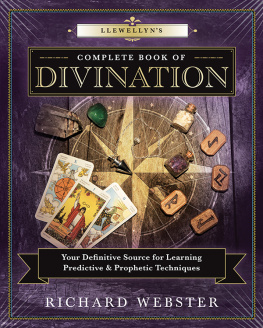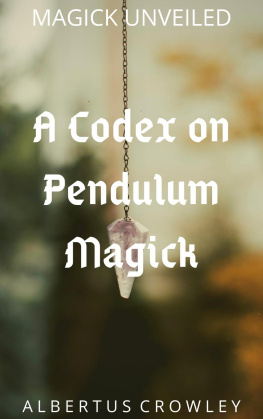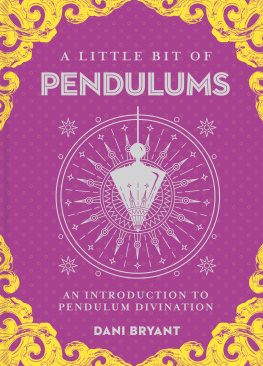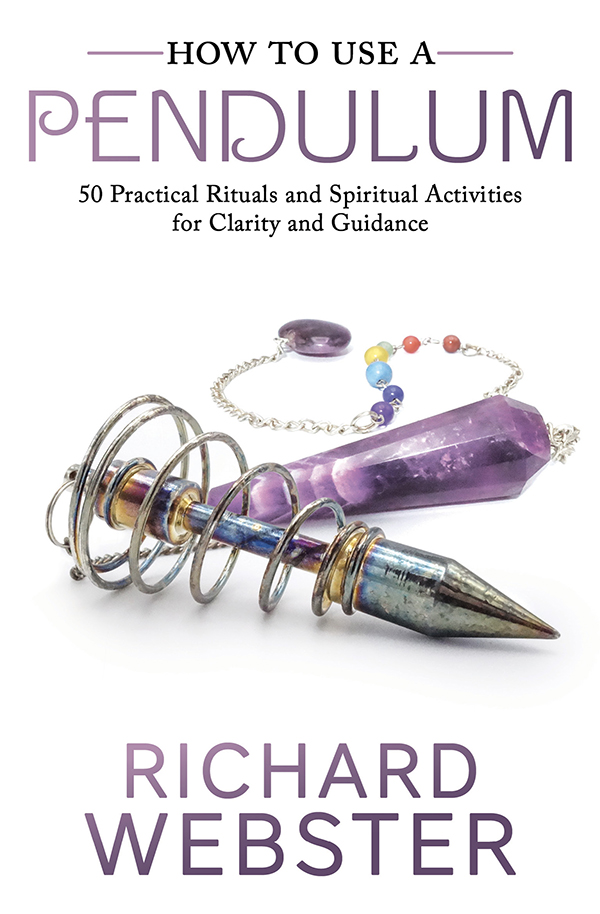About the Author
Richard Webster was born and raised in New Zealand. He has been interested in the psychic world since he was nine years old. As a teenager, he became involved in hypnotism and later became a professional stage hypnotist. After school, he worked in the publishing business and purchased a bookstore. The concept of reincarnation played a significant role in his decision to become a past-life specialist. Richard has also taught psychic development classes, which are based on many of his books.
Richards first book was published in 1972, fulfilling a childhood dream of becoming an author. Richard is now the author of over a hundred books, and is still writing today. His bestselling books include Spirit Guides & Angel Guardians and Creative Visualization for Beginners .
Richard has appeared on several radio and TV programs in the United States and abroad. He currently resides in New Zealand with his wife and three children. He regularly travels the world to give lectures, hold workshops, and continue his research.
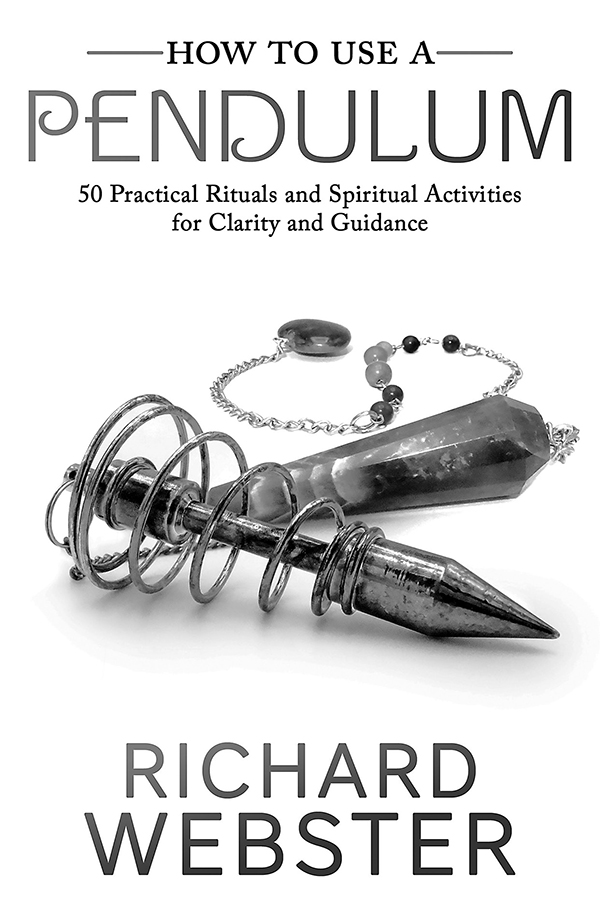
Llewellyn Publications
Woodbury, Minnesota
Copyright Information
How to Use a Pendulum: 50 Practical Rituals and Spiritual Activities for Clarity and Guidance 2020 by Richard Webster.
All rights reserved. No part of this book may be used or reproduced in any matter whatsoever, including Internet usage, without written permission from Llewellyn Publications, except in the form of brief quotations embodied in critical articles and reviews.
As the purchaser of this e-book, you are granted the non-exclusive, non-transferable right to access and read the text of this e-book on screen. The text may not be otherwise reproduced, transmitted, downloaded, or recorded on any other storage device in any form or by any means.
Any unauthorized usage of the text without express written permission of the publisher is a violation of the authors copyright and is illegal and punishable by law.
First e-book edition 2020
E-book ISBN: 9780738763293
Cover design: Shannon McKuhen
Deluxe Silver Spiral Pendulum and Premium Amethyst Chakra Pendulum used with permission by Lo Scarabeo
Photography by Llewellyn Art Department
Llewellyn Publications is an imprint of Llewellyn Worldwide Ltd.
Library of Congress Cataloging-in-Publication Data (Pending)
ISBN: 978-0-7387-6318-7
Llewellyn Publications does not participate in, endorse, or have any authority or responsibility concerning private business arrangements between our authors and the public.
Any Internet references contained in this work are current at publication time, but the publisher cannot guarantee that a specific reference will continue or be maintained. Please refer to the publishers website for links to current author websites.
Llewellyn Publications
Llewellyn Worldwide Ltd.
2143 Wooddale Drive
Woodbury, MN 55125
www.llewellyn.com
Manufactured in the United States of America
Contents
part 1:
Chapter 1:
Chapter 2:
Chapter 3:
Chapter 4:
part 2:
Appendix:
Introduction
A pendulum is a small weight attached to a length of thread or chain. Its a remarkable, deceptively simple instrument that can reveal information not able to be obtained in any other way. It can also be used for many other purposes, such as answering questions, continuing spiritual healing, enhancing inner growth, eliminating negativity, sending energy, and setting intentions.
The pendulum is a dowsing instrument. The word dowsing means to detect hidden substances, usually with the help of a forked stick, L-shaped metal rod, or pendulum. Many people dowse with their bodies instead of using a dowsing instrument (see ).
The pendulum has been used for thousands of years. The ancient Chinese used them to deter evil spirits, and thousands of years ago, ancient Egyptians used them to determine where to plant their crops (Copen 1974, 2021).
In his history of the Roman Empire, Ammianus Marcellinus (c. 325391 CE) wrote about a plot to assassinate the Roman Emperor Valens. A ring attached to a fine linen thread was suspended over a circular platter that contained the letters of the alphabet. The ring moved and spelled out T-H-E-O. This told the conspirators that the next emperor would be Theodorus. The conspirators were caught and executed before they were able to kill the emperor ( The Roman History of Ammianus Marcellinus , 000IX, 29).
Michel-Eugne Chevreul (17861889), a director of the Natural History Museum in Paris, spent twenty years studying the pendulum. He concluded that there was a strong relationship between the thoughts of the dowser and the movements of the pendulum. This phenomenon is called the ideomotor response, and shows that suggestion can create involuntary, unintentional, and unconscious movement. The term ideomotor action was first used by Dr. William Benjamin Carpenter in 1852. He created the word from ideo , meaning idea or thought, and motor , meaning muscular action.
In the early twentieth century, Abb Alexis Mermet (18661937), a village priest, became known throughout Europe as the king of dowsers. He learned the art from his father and grandfather, both well known for their dowsing skills. Using a pendulum, he discovered petroleum in Africa, conducted archaeological researches for the Roman Catholic Church, found water in Colombia, and located missing people and animals in many countries. In 1934, he located the body of a six-year-old boy in an eagles nest, high in the mountains of Switzerland. This sensational case attracted enormous media attention, and even skeptics were unable to explain how the boys body had traveled so far. Abb Mermets book, Principles and Practice of Radiesthesia , was published in 1935 and is still in print today.
The word radiesthesia means dowsing, and was coined by another priest, Abb Alexis-Timothe Bouly. He located water for troops during the First World War, and after the war, dowsed for unexploded shells. He was one of the founders of the Society of Friends of Radiesthesia. In 1950, he received Frances highest honor when he was knighted and became a Chevalier de la Legion dHonneur (Staffen 2019, 11).
The pendulum became popular with the general public in the early twentieth century when it was marketed as a sex detector. In this case, the pendulums were pea-sized hollow metal balls attached to a thread. I have one of these that was made in the 1920s. The instructions, printed on a postage stamp-sized piece of paper, said that if the pendulum was suspended over the palm of a pregnant woman it would move in a circular motion to indicate a girl, and in a straight line to indicate a boy.
During the Second World War, the Germans used dowsers to follow the movements of British warships (Willey 1975, 192). There are also many accounts of soldiers using pendulums and L-shaped rods to locate hidden mines and tunnels during the Vietnam War.
In early 1959, Verne Cameron, a professional dowser, contacted Vice Admiral Maurice E. Curtis and told him he could locate submarines using nothing but a pendulum and a map. He also claimed to be able to identify the nationality each submarine belonged to. The US Navy accepted his offer and watched Verne Cameron and his pendulum dowse a map of the Pacific Ocean. He located all the US submarines in a matter of minutes, and then located all the Russian ones. Despite this success, the navy didnt ask him to repeat the experiment. Several years later, Verne Cameron was invited by the South African government to dowse for precious resources. He applied for a passport but wasnt given one, as the CIA considered him a security risk (many sources, including Eason).



